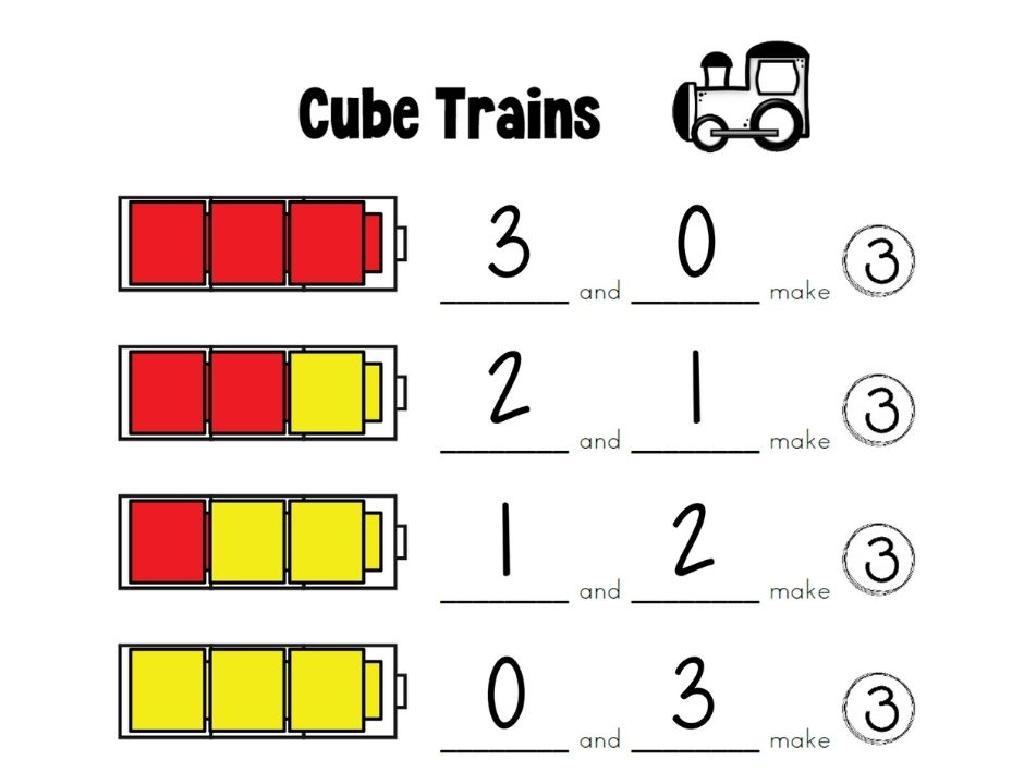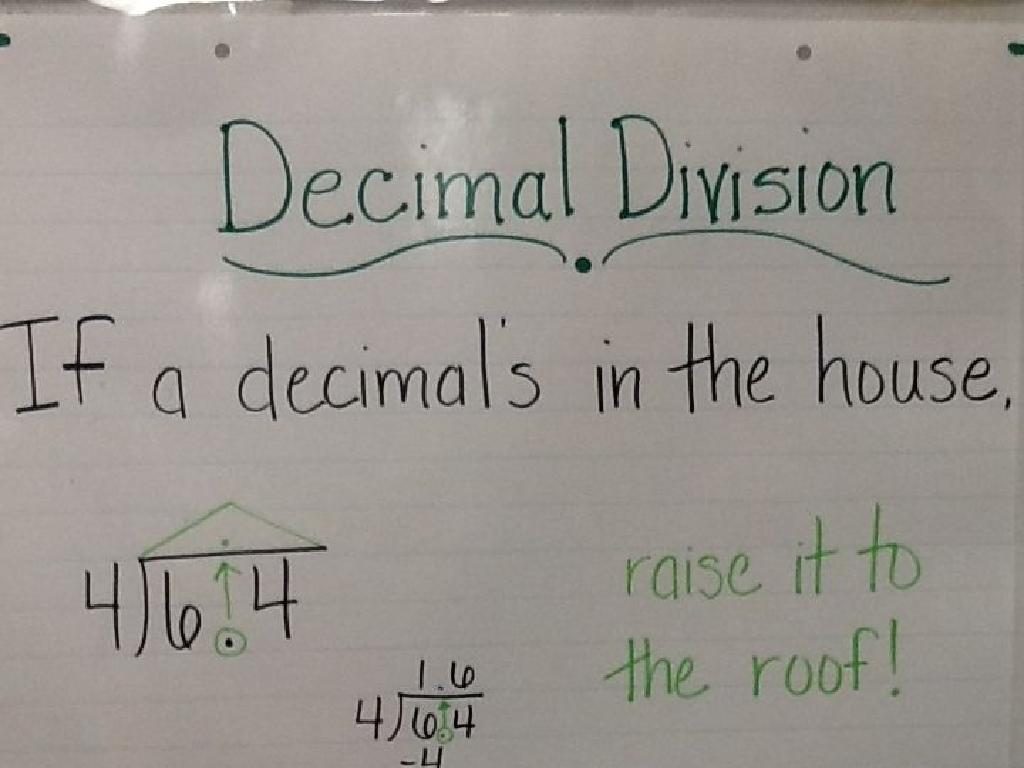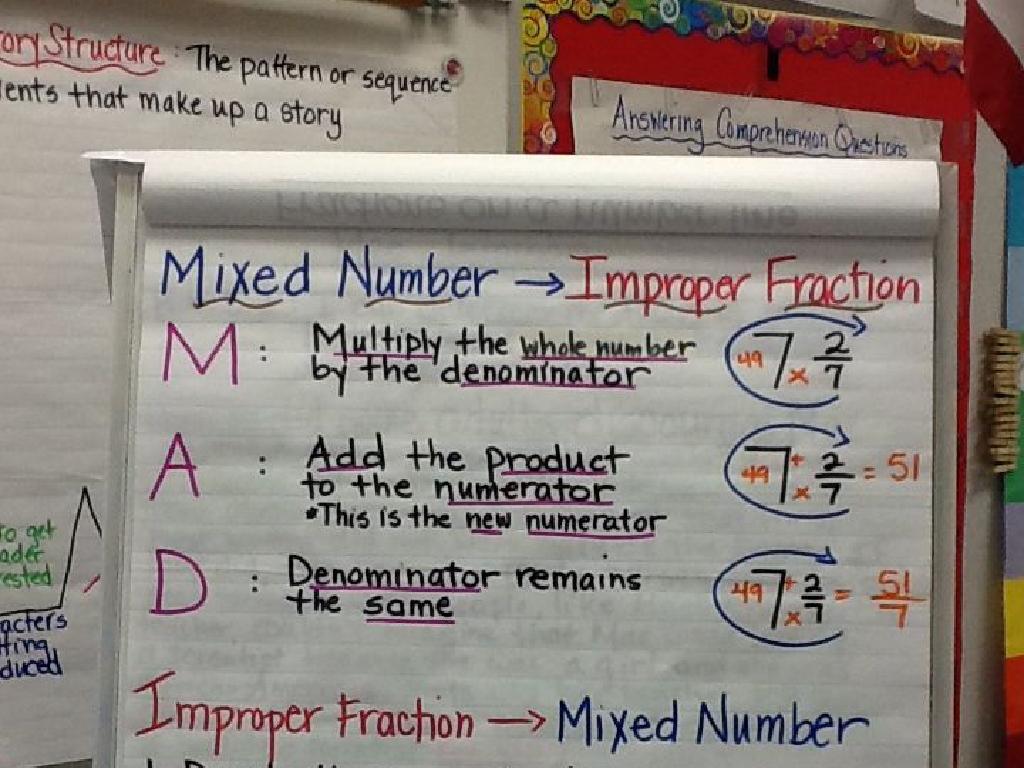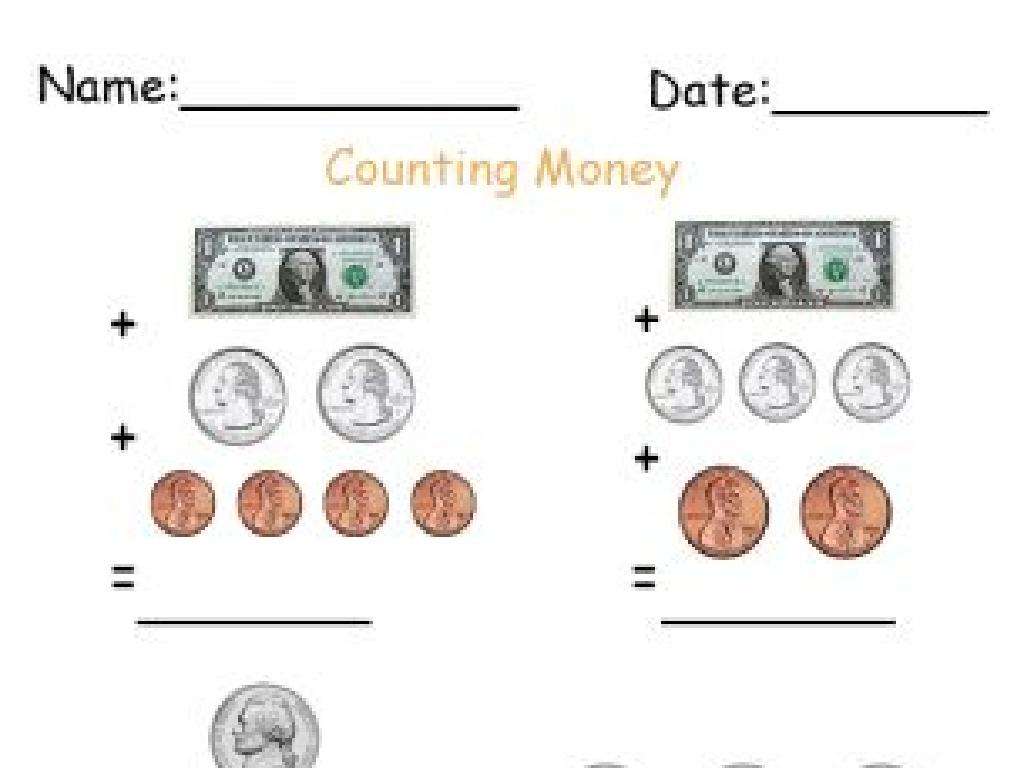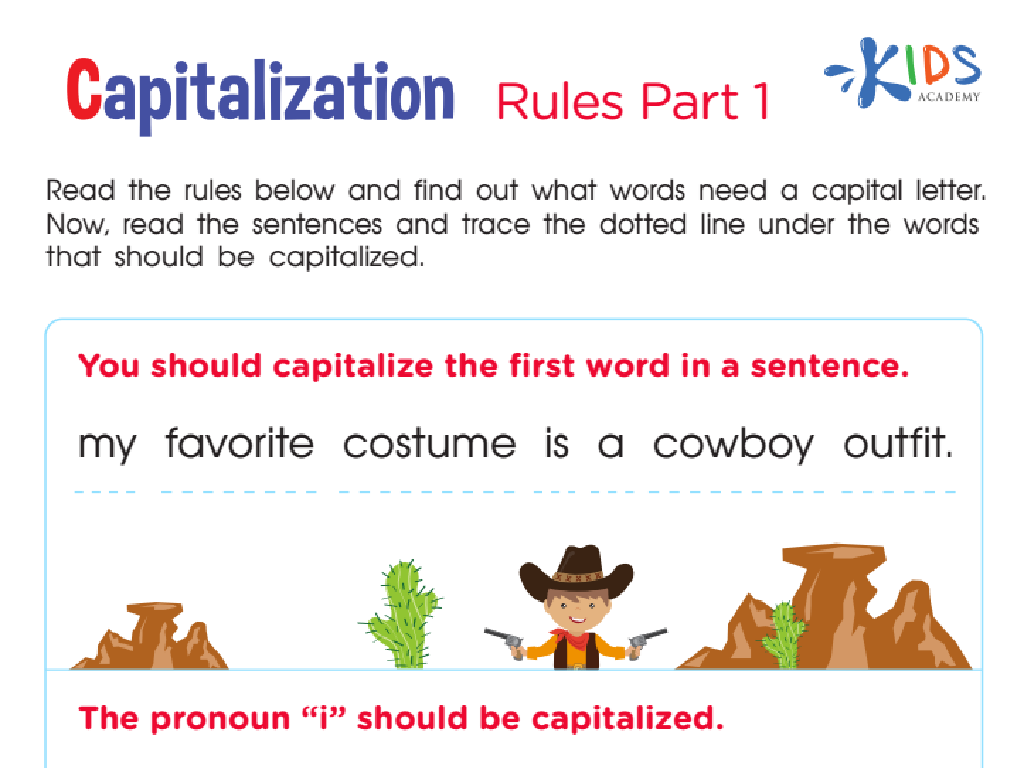Estimate Products: Word Problems
Subject: Math
Grade: Fourth grade
Topic: Multiply By Two-Digit Numbers
Please LOG IN to download the presentation. Access is available to registered users only.
View More Content
Welcome to Estimating Products!
– What is estimation?
– Estimation: Finding a number close to the exact amount
– The value of estimation
– Helps make quick & reasonable number guesses
– Estimating in word problems
– Use estimation to solve real-life scenarios
– Today’s learning goal
– Aim to estimate products using multiplication
|
This slide introduces the concept of estimation, emphasizing its importance as a practical skill in everyday life and mathematics. Estimation allows students to make quick, reasonable guesses about quantities without needing the exact number, which can be particularly useful in situations where an approximate value is sufficient. The goal for today’s lesson is to apply estimation techniques to word problems involving multiplication, helping students to develop a sense of number magnitude and improve their problem-solving skills. Encourage students to think about times they have used estimation outside of school, such as guessing the number of candies in a jar or the time needed to travel somewhere.
Understanding Estimation in Multiplication
– What is estimation?
– Estimation finds a number close to the exact answer.
– Estimation uses rounding
– We round numbers to simplify calculations.
– Example: Rounding 47 to 50
– To estimate 47 x 6, round 47 to 50, then multiply by 6.
– Estimating products in problems
– Use estimation to quickly solve word problems.
|
This slide introduces the concept of estimation, which is a mathematical technique used to find an approximate answer that is close to the exact answer. It’s particularly useful when exactness is not required, and a quick calculation is needed. Teach the students how to round numbers to the nearest ten or hundred to make multiplication easier. For example, show how rounding 47 to 50 can simplify the process of multiplying by 6. Emphasize that estimation is a valuable skill in solving word problems quickly, especially when dealing with large numbers or when a ballpark figure is sufficient. Encourage students to practice by rounding various numbers and estimating the products.
The Power of Estimation
– Estimation saves time
Quickly find approximate values without detailed calculations.
– Checks reasonableness of answers
Compare estimates to actual results to ensure they make sense.
– Practical in daily life
Useful for budgeting or making quick decisions while shopping.
– Enhances mental math skills
|
This slide introduces students to the concept of estimation in multiplication and its practical benefits. Emphasize that estimation is a valuable skill that allows for quicker calculations when exact numbers are not necessary. It’s also a tool for verifying the accuracy of answers. In real-life scenarios, such as shopping or budgeting, estimation is frequently used to make rapid decisions. Encourage students to practice by rounding numbers to the nearest ten or hundred to simplify multiplication problems. Provide examples such as estimating the total cost of items in a shopping cart to see if it’s within budget. Highlight that improving estimation skills also helps to strengthen mental math abilities.
Multiplying by Two-Digit Numbers
– Review multiplication steps
– Example: Multiply 23 by 45
– To multiply 23 by 45, we stack the numbers and multiply each digit.
– Practice multiplication together
– We’ll solve some problems as a class to reinforce the method.
– Discuss estimation techniques
– Learn to round numbers to estimate the product of large numbers.
|
Begin the lesson by reviewing the steps for multiplying by two-digit numbers, ensuring that students recall the process from previous lessons. Use the example of 23 x 45 to demonstrate the multiplication process step by step. Encourage students to follow along and solve the problem in their notebooks. After the example, engage the class in a practice session where everyone tries to solve similar problems together, fostering a collaborative learning environment. Introduce the concept of estimation to make multiplication quicker and check the reasonableness of answers. Provide tips on rounding numbers to the nearest ten or hundred to simplify the multiplication process. The goal is to build confidence in multiplying two-digit numbers and understanding when and how to use estimation effectively.
Estimating Products in Word Problems
– Carefully read the problem
– Find numbers to estimate
– Round numbers then multiply
– Practice with a car example
– If a car goes 47 miles/hour, round to 50 and multiply by 2 hours for an estimate.
|
This slide is aimed at teaching students the process of estimating products in word problems. Start by reading the problem thoroughly to understand what is being asked. Next, identify the key numbers that need to be estimated. Teach students to round these numbers to the nearest ten or hundred to simplify multiplication. For example, if a car travels 47 miles per hour, we round 47 to 50 because it’s closer to 50 than to 40. Then, we multiply 50 by 2 to estimate that the car travels about 100 miles in 2 hours. Encourage students to practice this technique with different word problems to become proficient at estimating products.
Let’s Practice Estimating!
– Estimate cost of chairs
– Round 34 to 30 and $48 to $50, then multiply.
– Estimate total flowers
– Round 56 to 60 and 24 to 20, then multiply.
|
This slide is designed to help students practice estimation with word problems. For the first problem, guide students to round the number of chairs to the nearest ten and the cost per chair to the nearest ten dollars before multiplying to estimate the total cost. For the second problem, instruct students to round the number of rows and the number of flowers per row to the nearest ten before multiplying to estimate the total number of flowers. Emphasize that estimation helps to quickly find an approximate answer without needing the exact numbers. Encourage students to share their estimation strategies and discuss why it’s useful to estimate in real-life situations.
Class Activity: Estimation Relay
– Split into teams for relay
– Solve estimation problems step-by-step
– Estimate products in word problems, one step per person
– Pass your work to the next teammate
– First team with correct estimate wins!
– Check each other’s work for accuracy
|
This activity is designed to encourage teamwork and understanding of estimation in multiplication. Divide the class into small groups, and provide each team with a set of word problems that require them to estimate products of two-digit numbers. Each student in the team is responsible for one step of the problem-solving process and then passes their work to the next teammate. This relay continues until the problem is solved. The first team to arrive at the correct estimate wins a point. Ensure that students understand the importance of checking their teammates’ work for accuracy before passing it on. Possible variations of the activity could include different word problems for each team, timed rounds, or a ‘sudden death’ round where the first correct answer wins the game.
Reflecting on Estimation in Math
– Importance of estimation
Estimation helps us quickly find approximate answers.
– Estimation in solving problems
It simplifies complex problems and checks reasonableness of answers.
– Sharing our estimation insights
Discuss what estimation strategies worked best for you.
– How estimation aids math skills
|
As we wrap up, let’s reflect on the importance of estimation. It’s a powerful tool that helps us to quickly approximate without needing exact numbers, which is especially useful in real-life situations where quick decisions are needed. Estimation also helps us to simplify complex word problems, making them more manageable. It’s a skill that aids in developing number sense and mathematical reasoning. Encourage students to share their experiences with estimation, what strategies they found effective, and how they think estimation can help them in everyday situations. This reflection will help solidify their understanding and appreciation of estimation in solving math problems.

